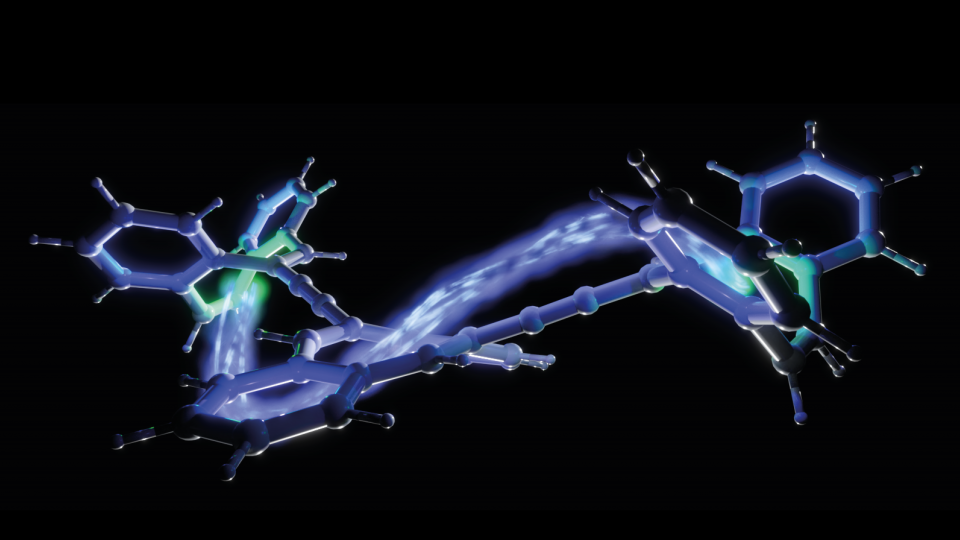Scientists from Lund University, Sweden, successfully developed a simple hydrocarbon molecule with a logic gate function, quite similar to that in transistors, in a single molecule.
 Illustration of electrons transferred between aromatic and non-aromatic rings in a hydrocarbon molecule. Image Credit: Daniel Strand/Jonas Ahlstedt.
Illustration of electrons transferred between aromatic and non-aromatic rings in a hydrocarbon molecule. Image Credit: Daniel Strand/Jonas Ahlstedt.
In the forthcoming days, the breakthrough could help develop electric components on a molecular scale. The study has been reported in the Nature Communications journal.
The manufacture of very small components is a significant challenge in both research and development. One example is transistors — the smaller they are, the quicker and more energy-efficient the computers become.
However, is there a limit to how small logic gates can turn out to be? Is it feasible to make electric machines on a molecular scale? The answer is perhaps yes, from a chemistry research group at Lund University.
We have developed a simple hydrocarbon molecule that changes its form, and at the same time goes from insulating to conductive, when exposed to electric potential. The successful formula was to design a so-called anti-aromatic ring in a molecule so that it becomes more robust and can both receive and relay electrons.
Daniel Strand, Chemistry Researcher, Lund University
Most organic molecules consist of aromatic benzene rings, that is, flat rings composed of six carbon atoms. A simple example is graphene. But such molecules do not alter shape or properties when subjected to electric potential.
Hence the researchers chose to look at hydrocarbons that are made up of rings having eight carbon atoms. These are anti-aromatic and bent into a tub shape. If two electrons are inserted into such a molecule, it flattens and goes from insulating to conducting — a function similar to that of a transistor that switches from 0 to 1.
A unique aspect of the molecules is that they are so simple. They only consist only of carbon and hydrogen atoms which makes them easier to produce synthetically.
Daniel Strand, Chemistry Researcher, Lund University
The breakthrough implies that scientists could currently think about how to design both electrical switches and new mechanical systems at the single-molecule level with the help of anti-aromatic hydrocarbons.
Molecules that change form in response to electric potential lead to exciting possibilities. One can imagine energy-efficient computer architectures and in the future perhaps electric machines on a molecular scale.
Daniel Strand, Chemistry Researcher, Lund University
The study performed was an interdisciplinary collaboration between research teams in analytical, organic and theoretical chemistry as well as chemical physics at Lund University and the University of Copenhagen.
Journal Reference:
Tasić, M., et al. (2022) Electro-mechanically switchable hydrocarbons based on [8]annulenes. Nature Communications. doi.org/10.1038/s41467-022-28384-8.